RECOIL OFFGRID Preparation Grit, Gear, and Gumption: The PNW Survival Games Experience
In This Article
An engineer, municipal worker, and a teacher walk into a campsite. No, this is not the setup to a joke, it's a testament to the range of people with diverse backgrounds who came from all over the country to participate in the PNW Survival Games. In the heart of Oregon's rugged wilderness, the Games offers a unique blend of education, competition, and camaraderie. This event, held this year at the scenic Hipcamp in Molalla Ripple, invited participants from all walks of life to test their survival skills in a series of intense, hands-on challenges. With nearly 40 contestants, esteemed judges from popular survival TV shows like Alone and Naked and Afraid, and experts from well-known survival training companies, the event offered a unique opportunity for anyone interested in honing their wilderness survival skills.
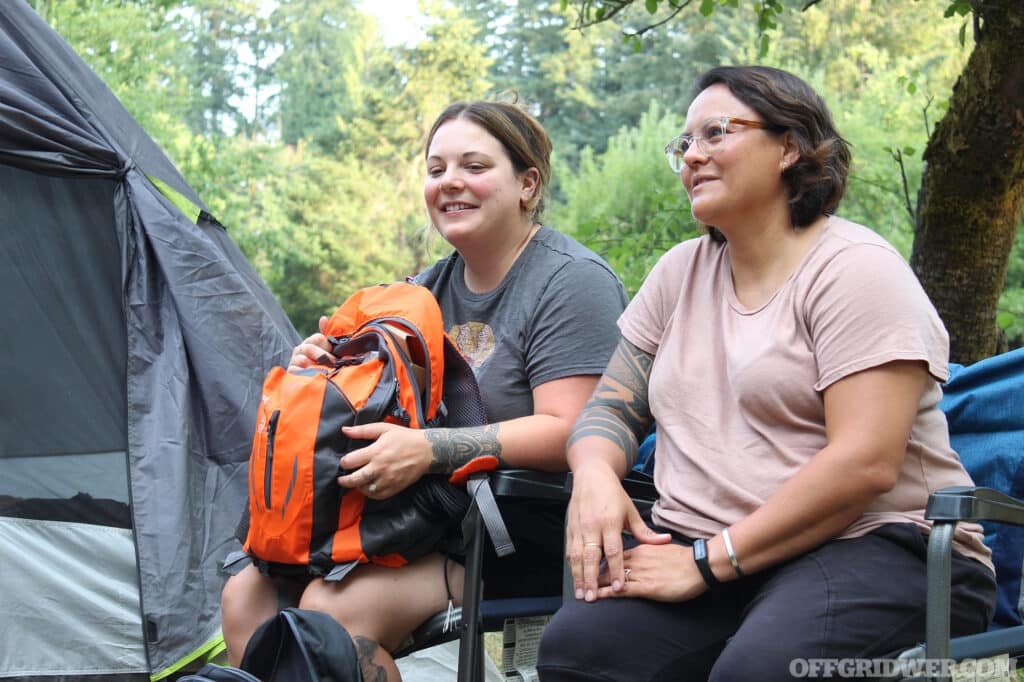
Above: Many of the participants had no prior survival training and felt a little nervous before the games started. However, they were optimistic and eager to learn!
The PNW Survival Games is open to the public, requiring nothing more than the purchase of a $395 ticket to participate. This accessibility, combined with the opportunity to learn from seasoned survival experts, is making it a must-attend event for both seasoned enthusiasts and curious beginners. This year, participants ranged from teachers and utility workers to retired engineers and even a former PBS correspondent, each eager to learn and push their limits in the wild. For those who are fans of survival reality shows, signing up asked participants if they want to be considered for inclusion a televised version of the Games, adding another layer of excitement to the mix.
The first day of the PNW Survival Games was more about connection than competition. As contestants and staff arrived at Hipcamp Molalla Ripple, the atmosphere was relaxed and welcoming. There were no claims of expertise, no bravado—just a group of people united by a shared interest in survival skills. This was a gathering of diverse individuals, each with their unique background and experience level, coming together to learn, share, and grow.

The event’s experts, or subject matter experts (SMEs), were particularly passionate about sharing their knowledge. Their enthusiasm was infectious, setting the tone for the days to come. Despite the relaxed atmosphere, there was a palpable undercurrent of excitement as everyone anticipated the challenges that lay ahead.
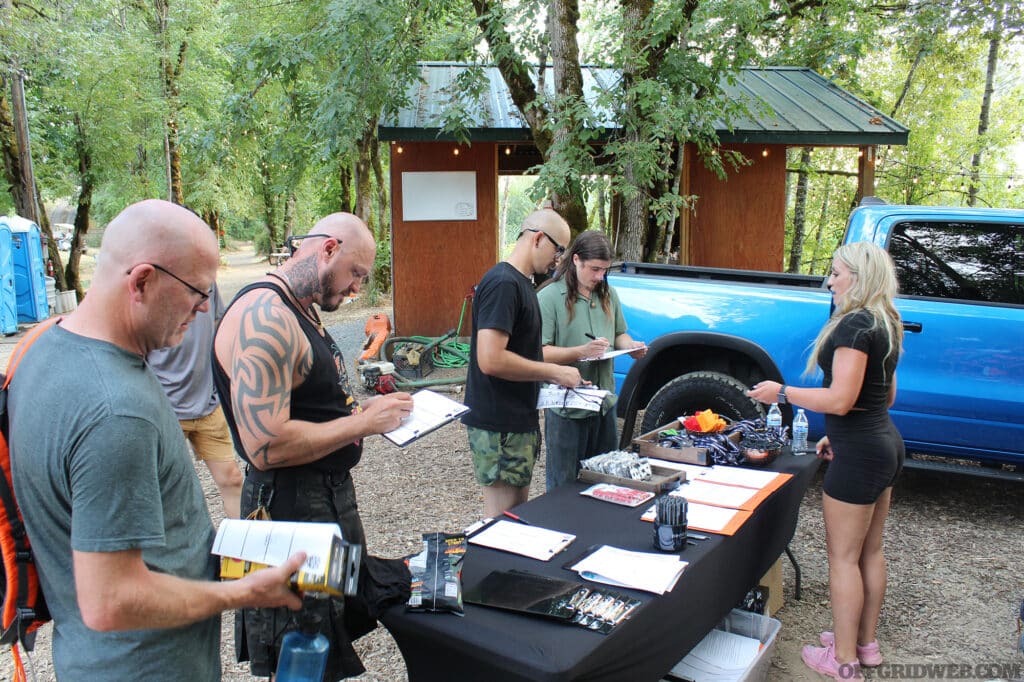
Above: Contestants signed terms of agreement before participating, and were issued crucial items for the days ahead.
Day one of the PNW Survival Games kicked off the morning with introductions and backstories, allowing contestants to get to know one another and the experts they’d be learning from. Contestants also received everything they would be allowed to use over the course of the two days. This included:
All of these items were placed into a pack that would be carried throughout the duration of the challenges, and were meant to mirror common survival items that are frequently carried by recreationalists and adventurers versed in their use. With gear distributed, and introductions out of the way, the Games began with the first challenge!
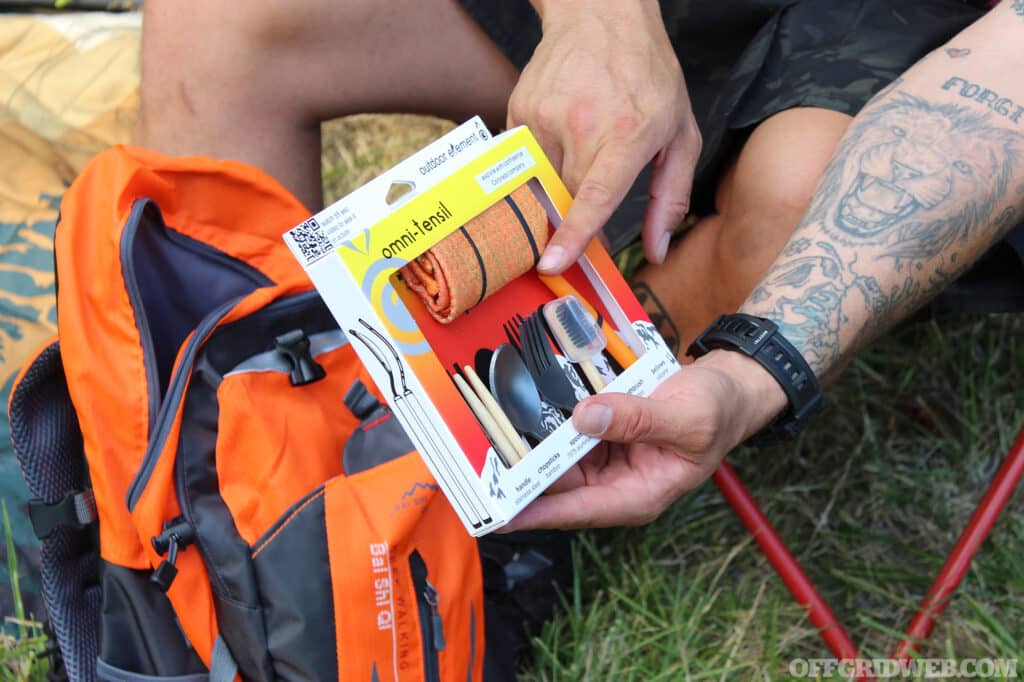
Above: Each contestant was issued a backpack full of gear that would be crucial to completing the challenges over the next two days.
Led by Dana Anderson (aka “Wild Mountain Man Dan”), the shelter-building challenge was an exercise in resourcefulness and quick thinking. This challenge began with an introduction to the “Rule of Threes”—a survival principle that emphasizes the importance of addressing critical needs within specific time frames. Peter Bauer of Rewild Portland added his own twist: “Three seconds to check your attitude,” stressing the mental aspect of survival. From there, Dan moved on to discuss the importance of shelter in a survival scenario, particularly the need to mitigate exposure to the elements.
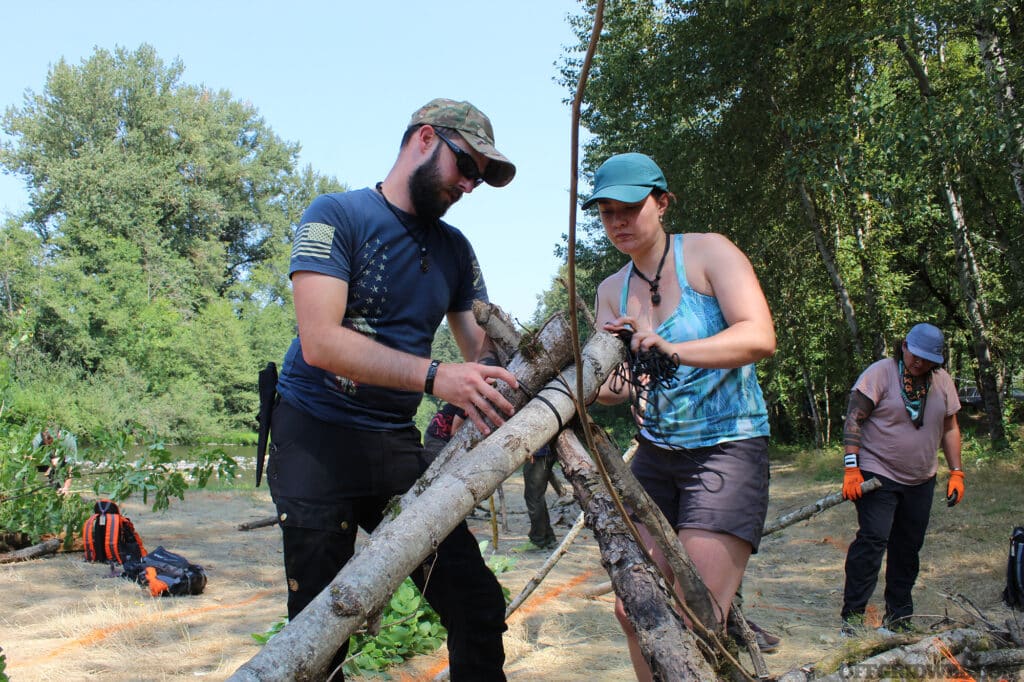
Above: Two contestants lash sourced timber together for the frame of their shelter.
The rules for the challenge were simple but demanding: contestants had 60 minutes to build a weatherproof shelter using only natural materials found on the ground. The scramble for materials was immediate and intense, with contestants racing to claim the best resources along a short stretch of the riverbank. The pressure was on, and as the midday sun beat down, temperatures soared into the mid-80s, adding another layer of difficulty to the task.
When time was up, contestants were required to step away from their shelters and prepare for judgment. Exhausted and overheated, they took a short water break while the judges evaluated their work. The shelters, constructed from leaves, branches, and other natural materials, were put to the test in a dramatic fashion. One member from each team donned a dry orange jumpsuit and lay beneath their shelter as a fire hose pumped water from the nearby river in an overhead manner that resembled a heavy downpour. The goal was simple: stay dry.
After 15 seconds of the shelter being drenched by the hose, the jumpsuits were removed and weighed to determine how much water they had absorbed. This practical test of the shelters’ effectiveness highlighted the importance of proper construction and attention to detail in survival situations.
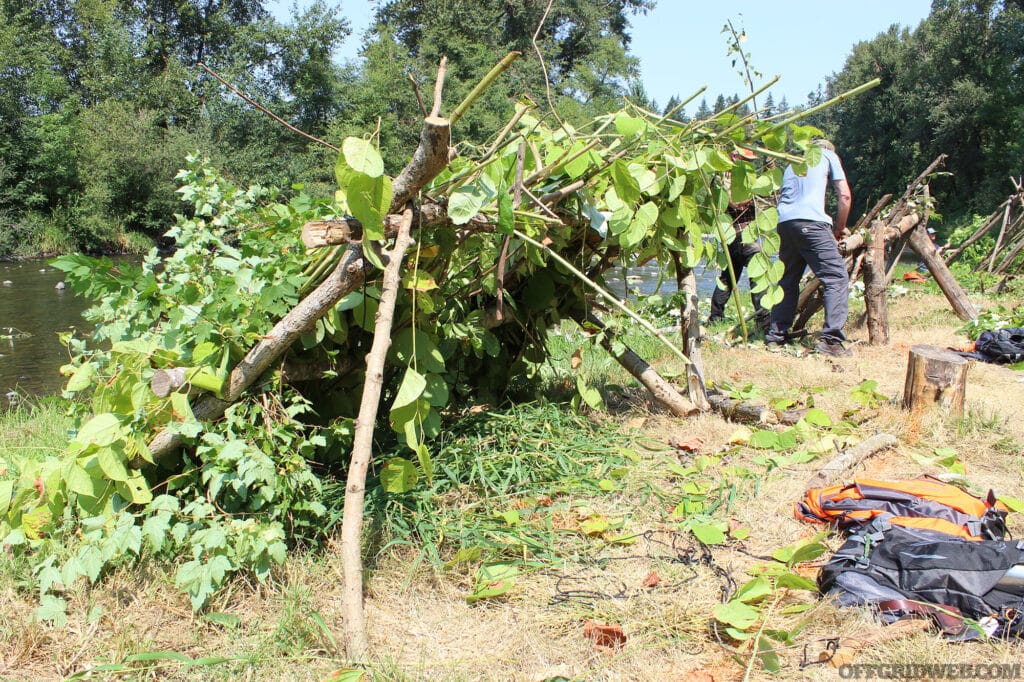
Above: Foliage needed to be stacked thickly to prevent water from getting inside during the weather proof test.
The second challenge of the day focused on archery, with EJ Snyder from Naked and Afraid leading the way. EJ’s expertise in primitive weaponry was evident as he demonstrated the use of a bundle bow and shared tips on arrow-making and the construction of a slingshot bow. The rules for this challenge were equally demanding: contestants had 60 minutes to craft six arrows, a bundle bow, and a slingshot bow. Some materials, like fletching and river cane for arrows was provided. Other materials had to be sourced from the landscape and provided gear. Arrowheads were available via Grim Workshop survival cards included in each of the contestants kits.
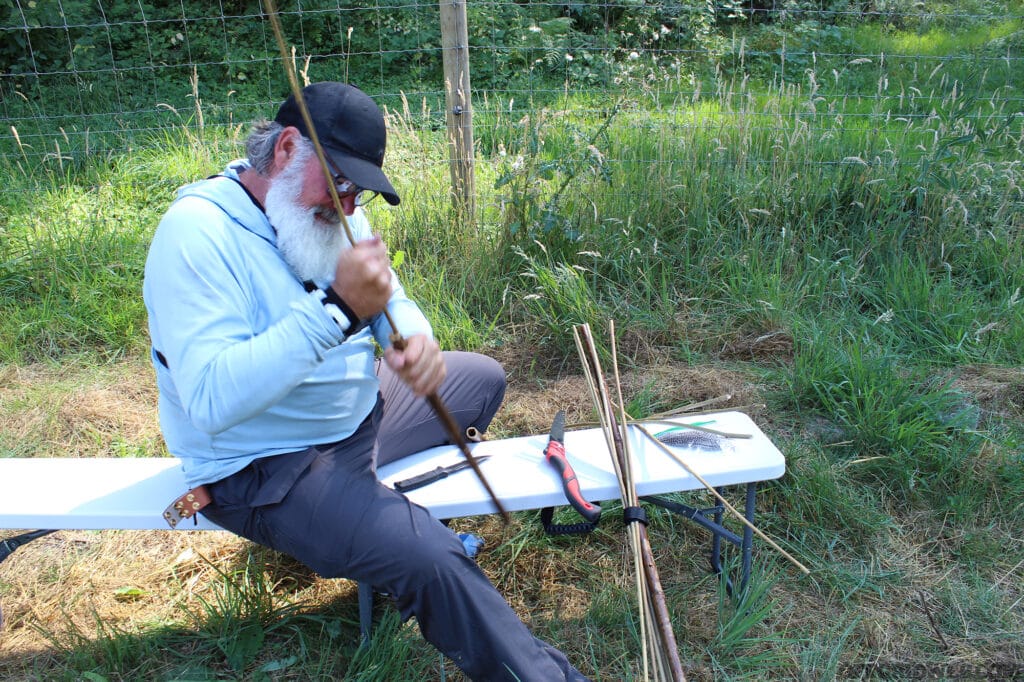
Above: River cane with a larger diameter than the arrows was used as the “barrel” for the slingshot bow.
The archery challenge was divided into three stations, each testing different aspects of the contestants’ skills. At the first station, they were tasked with shooting at five spinning balloons, earning one point for each balloon hit. The second station involved a side-to-side moving target, with contestants needing to hit the target once to earn five points. The third station featured long-range shots at large balloons filled with colored powder, with points awarded based on the order of successful hits.
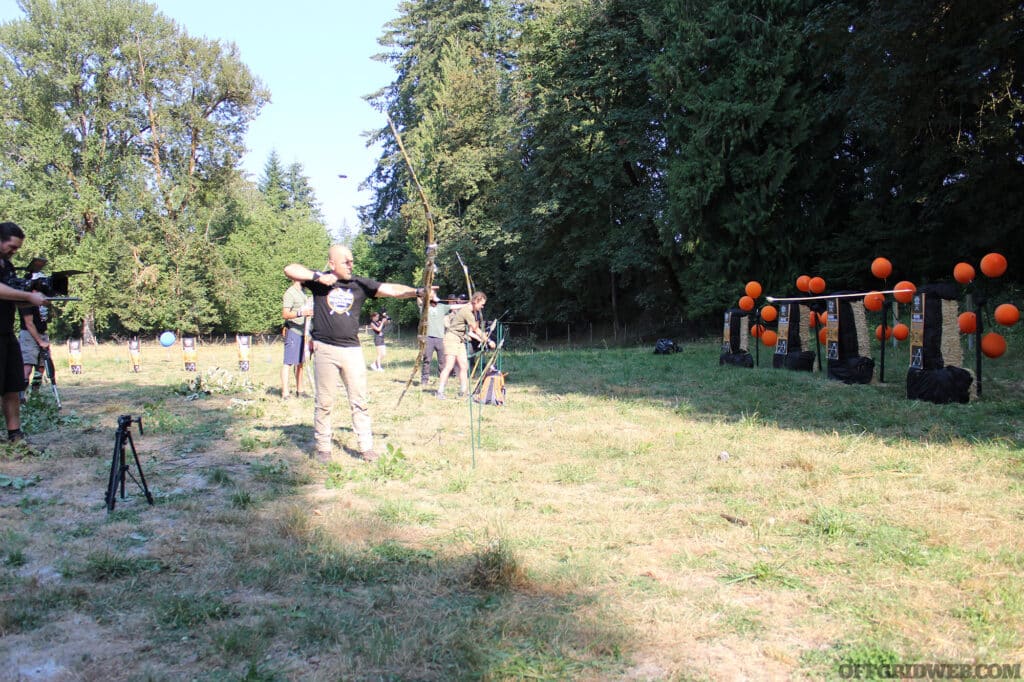
Above: Orange balloon targets were rotating on a spindle, providing an additional layer of difficulty to the challenge.
Despite the challenge’s intensity, the contestants impressed with their resourcefulness. Even though some arrows weren’t perfectly straightened, they still managed to hit their targets. The Games are not without danger, as the first injury of the event occurred during this challenge. One contestant, attempting to meet the time constraints, lost his concentration and suffered a minor knife wound while constructing their bow and arrows. Fortunately, the injury was not serious and was quickly tended to, underscoring the real risks involved in survival activities.
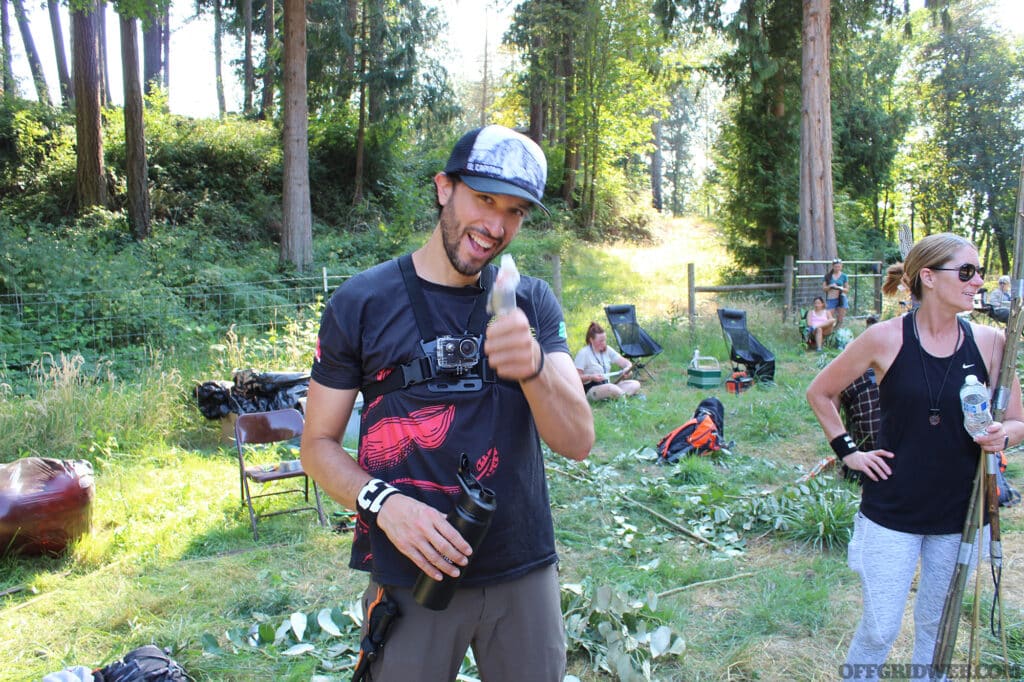
Above: Although minor, this contestant injured his thumb while losing focus crafting his bows and arrows.
The final challenge of the day revolved around a skill essential to survival: fire-making. Sharon Ross of Afrovivalist took the lead, emphasizing the evolutionary importance of fire in human history. She demonstrated how to start a fire using a gum wrapper and an AA battery, a technique that fascinated and challenged the contestants.
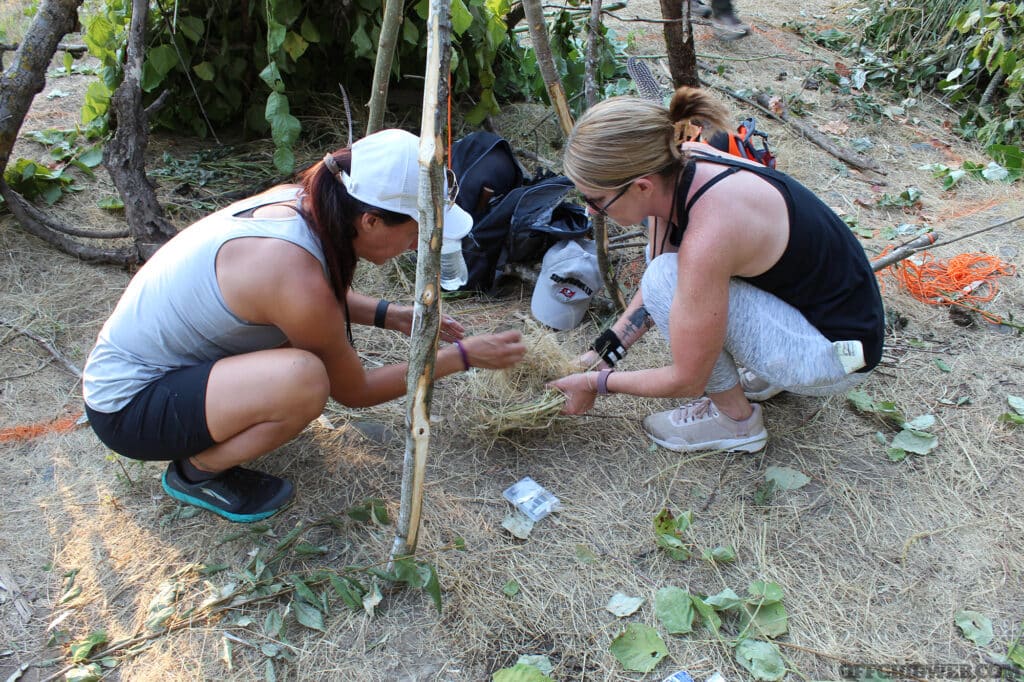
Above: Starting a fire with AA batteries and chewing gum wrapper is challenging but possible if prepared properly.
Rules for this challenge were straightforward but challenging, contestants had 60 minutes to build a tripod that their fire would be made underneath, gather tinder and kindling, start a fire using the gum wrapper method, and heat a plastic bottle of water to 210 degrees Fahrenheit without it melting or spilling on to the flames. If they failed to start a fire with the gum wrapper within 15 minutes, they could switch to using a ferro rod. And finally, after heating their water to boiling temperature, they had to use a second tinder bundle and light a tiki torch as part of the process.
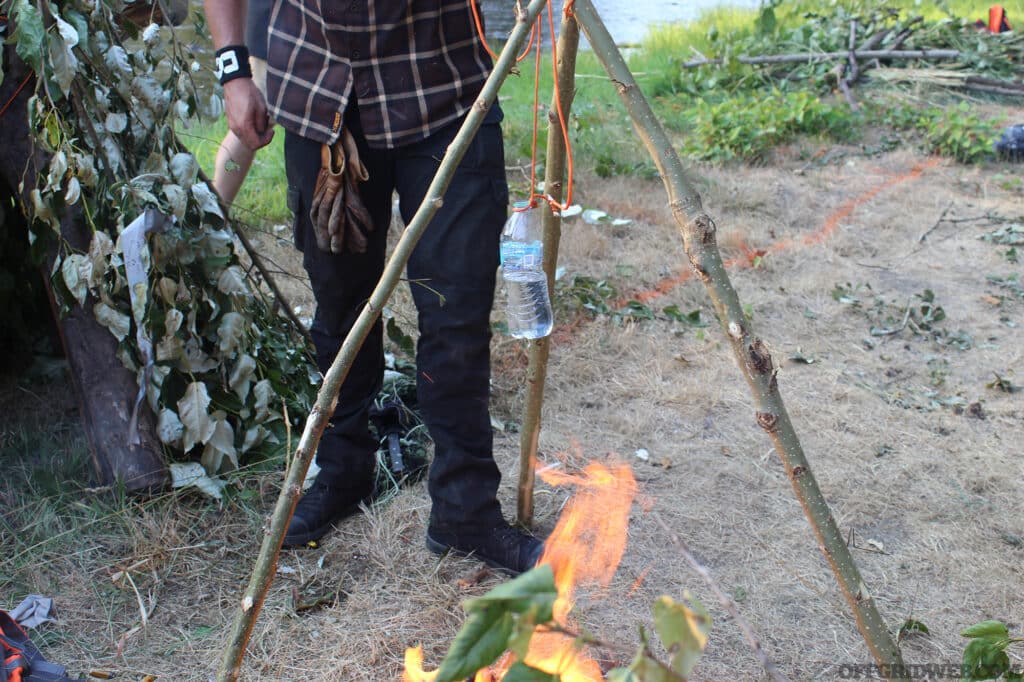
Above: If suspended carefully, water can be boiled in a plastic container without the exterior melting completely.
After fires were lit and water was boiled, the sense of accomplishment was, with everyone finishing the challenge with 7 minutes and 30 seconds left on the clock. The tiki torches were later used to light the dinner tables, adding a warm and symbolic glow to the evening’s meal—a pig roast that had been cooking over an open fire all day. After dinner, contestants were encouraged to pick the brains of the guest judges, gaining further insights into survival techniques.
The second day of the PNW Survival Games began with a discussion led by Wild Mountain Man Dan on the origins of the self-reliance movement, tracing its roots back to the Back to Basics movement of the 1970s. This historical context set the stage for the day’s challenges, which would push the contestants to their physical and mental limits.
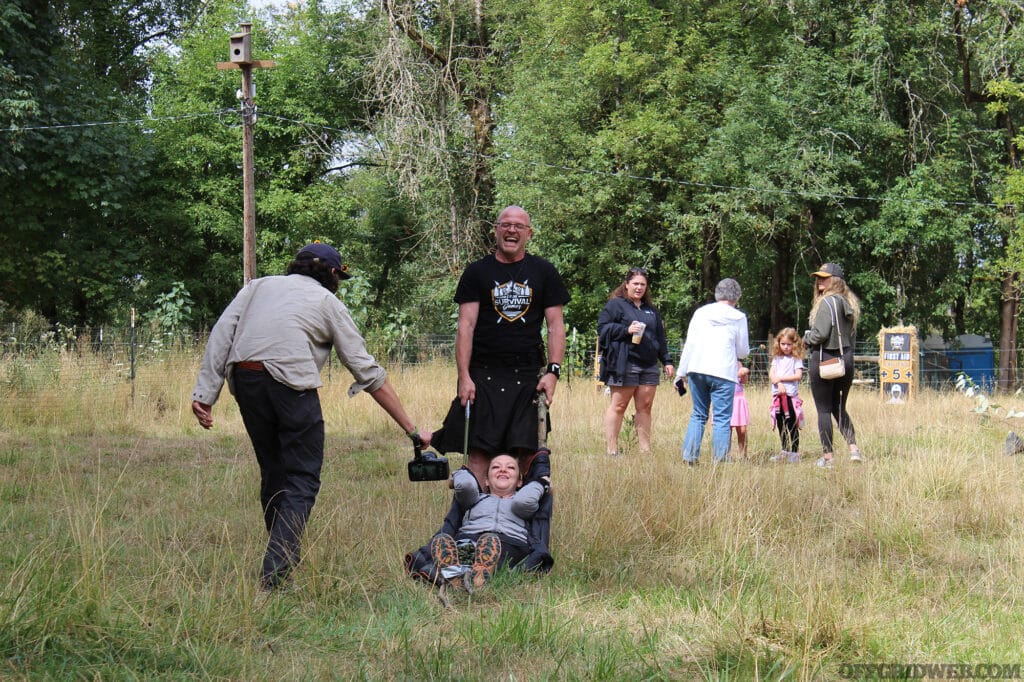
Above: Pulling a patient on an improvised litter is laborious and physically exhausting, even over relatively short distances. The hot weather made for tough conditions for the the participants.
Natalie Bonthius from Survival Med delivered an in-depth session on wilderness first aid and first responder skills. She covered a wide range of topics, from the first evidence of amputation 30,000 years ago to modern techniques for bleeding control. Natalie emphasized the importance of the MARCH Protocol—Massive Hemorrhage, Airway, Respirations, Circulation/C-Spine, Hypo/Hyperthermia—as a guide for prioritizing care in emergency situations.
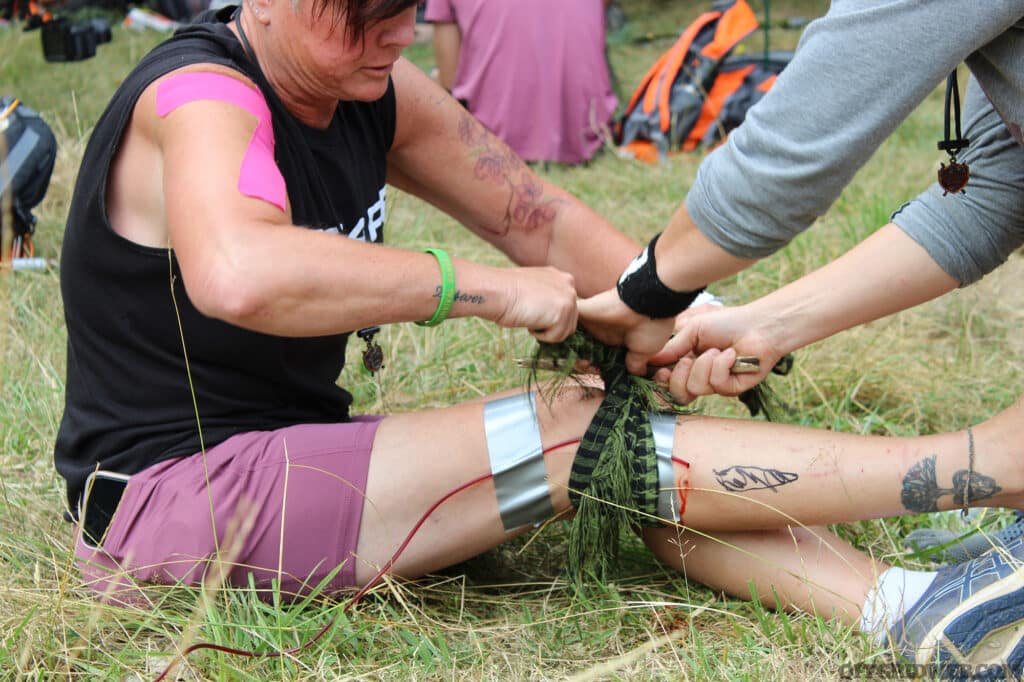
Above: Fake blood, suspended in an IV bag, was used to replicate a major hemorrhage. The bleeding needed to be stopped via improvised tourniquet before contestants could move on to the next part of the challenge.
The challenge that followed required contestants to apply these skills in a simulated emergency. They had 60 minutes to stop a bleed stemming from a fake blood pouch, close a wound with duct tape sutures, splint a leg with improvised materials, and transport the “patient” to safety using an improvised litter. This challenge brought out the best in the contestants, but also highlighted the harsh realities of survival. One contestant suffered from heat exhaustion and had to withdraw, a stark reminder of the physical demands of the environment.
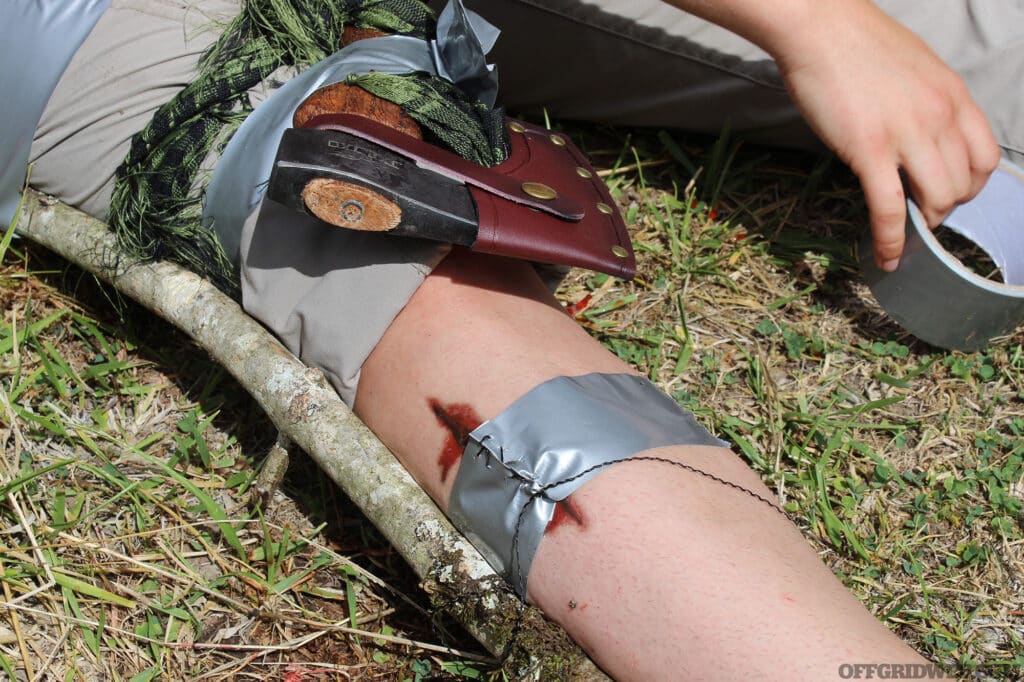
Above: Contestants were taught how they could use duct tape to suture a wound without actually have to penetrate the skin (wound was simulated).
Despite the difficulties, the challenge was a success. Contestants showed resilience and adaptability, learning valuable lessons about the importance of preparedness and the risks involved in wilderness survival.
Next up was the trap-building challenge, led by Biko Wright from the History Channel’s Alone – Season 8. Contestants were tasked with constructing a spring-step trap, a traditional snare used to catch small game. The rules required contestants to dig a step hole measuring 12 inches by 12 inches by 12 inches (later revised to 6 inches deep due to soil conditions), camouflage the hole, set the trap, and successfully catch an “animal”—in this case, a stuffed teddy bear.
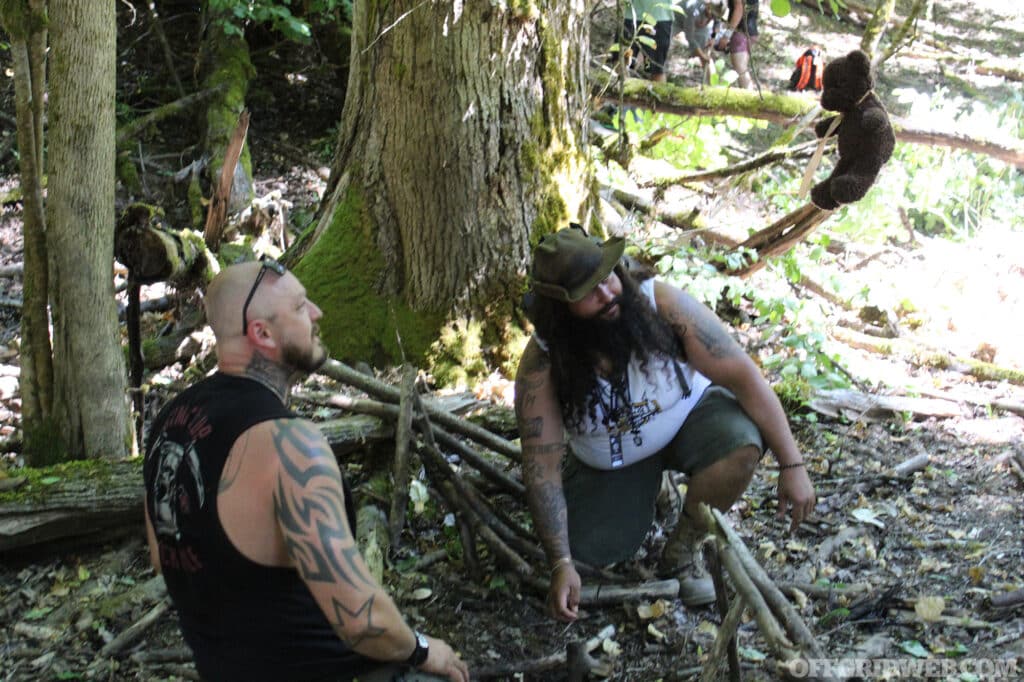
Above: Spring traps are effective at catching small game, or in this case, a careless teddy bear. Being able to procure valuable food resources is a vital survival skill.
This challenge tested not only the contestants’ technical skills but also their patience and attention to detail. Setting the trap and camouflaging it effectively was no easy feat, and many contestants struggled to get the trigger mechanism just right. However, the satisfaction of successfully suspending the teddy bear at least four feet above the ground made the effort worthwhile.
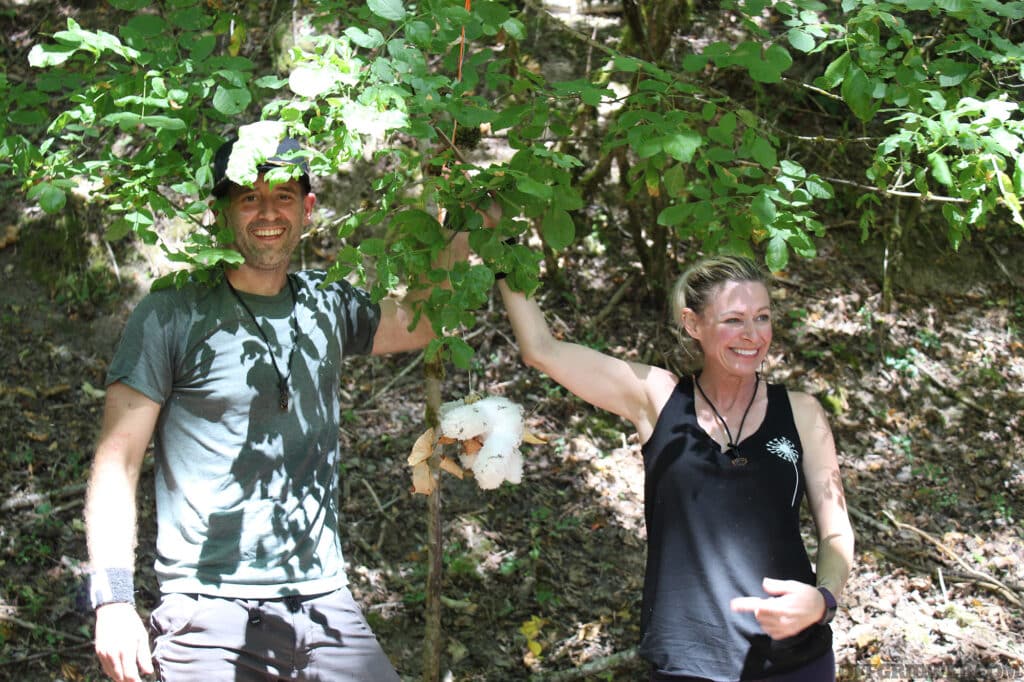
Above: Setting a snare trap can be frustrating, even for experienced trappers. Getting it done within a 60 minute time frame is nothing short of impressive.
The final challenge of the event was the raft-building competition, which required teamwork, creativity, and resourcefulness. EJ and Karie Lee from History Channel's Alone, were leading the charge, and discussed the basics of a “Huck Finn” style raft. Teams were combined (two teams per raft), and given 60 minutes to construct a one-person raft using materials from the shelter-building challenge.
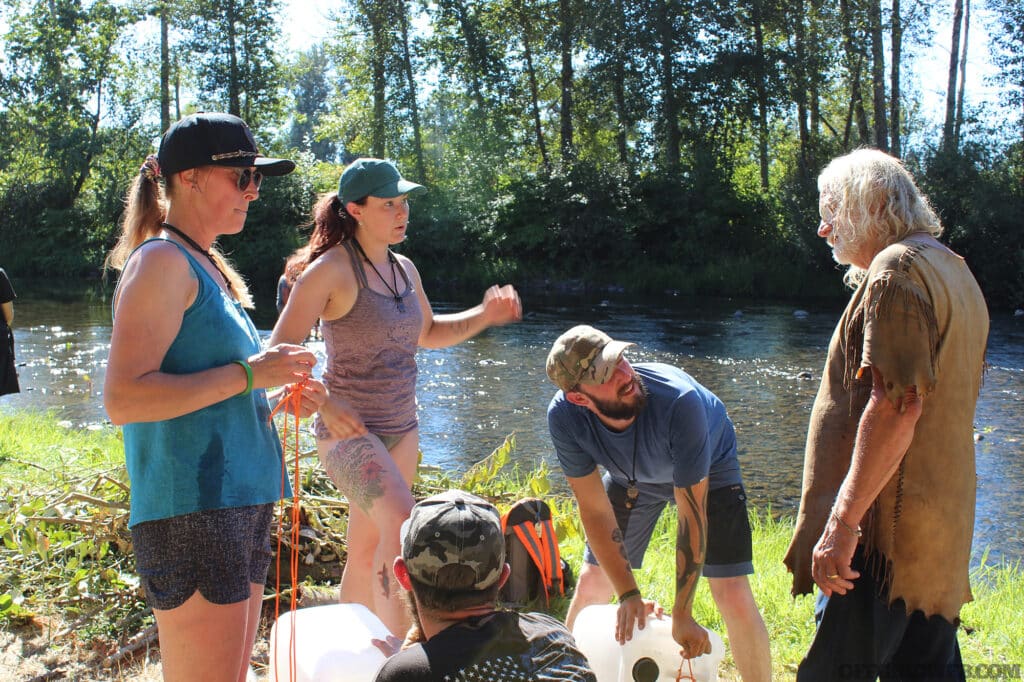
Above: Wild Mountain Man Dan offers suggestions to teams with questions, but as an instructor/judge, he is unable to help them physically.
They were also given two 5-gallon jugs and a blue tarp to use wherever teams deemed appropriate. The rafts were judged on buoyancy, craftsmanship, and maneuverability, and contestants had to use their rafts to retrieve flags hidden in the river and on the distant shore. Once they returned, they had to carry their rafts a short distance to the PNW Survival Game’s finish line, and to triumphant celebration!
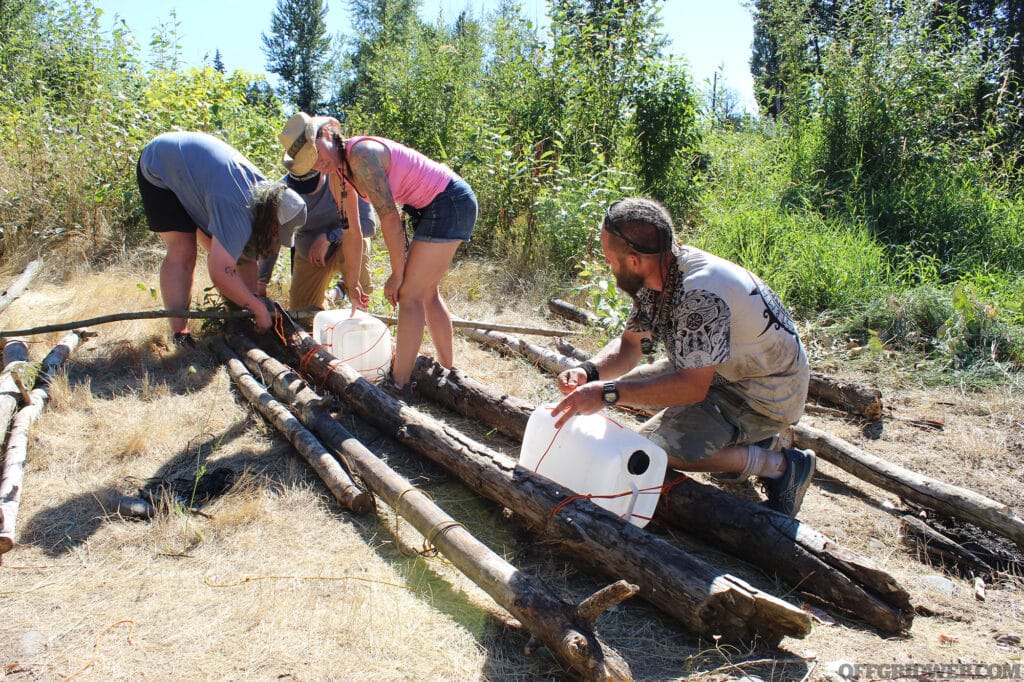
Above: Combined teams did not have much time to discuss how to design and build their rafts. This meant using some serious teamwork and problem solving skills.
The raft-building challenge was a fitting conclusion to the PNW Survival Games, bringing together all the skills and lessons learned over the past two days. As contestants tested their rafts in the water, it was clear that the designs were both innovative and functional. The excitement was palpable as teams navigated the river, retrieved their flags, and returned to shore, showcasing their survival skills and teamwork.
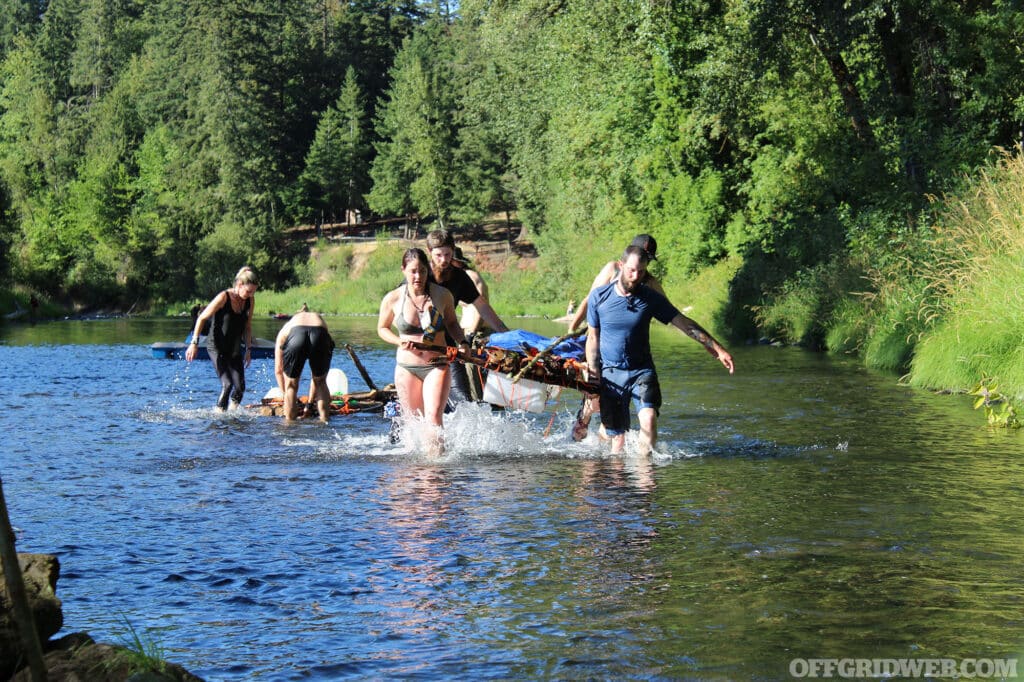
Above: The improvised rafts did not always hold up the way the contestants wanted them to, making navigation through the river extremely difficult.
The PNW Survival Games culminated in the announcement of the top three teams, who were recognized for their outstanding performance throughout the event. The third and second-place winners both earned 41 points and the judges were asked to evaluate the nuances of their rafts to break the tie. Remarkably, one member of the second place team, a retired municipal worker, had never even been camping a day in his life and had purchased his gear just two weeks prior to the event. The first-place winners, with 45 points, attributed their success to their meticulous preparation, including practicing challenges from previous years and maintaining an organized approach to their gear. As one of the winners noted, “You never rise to the occasion, you sink to your lowest level of training.”
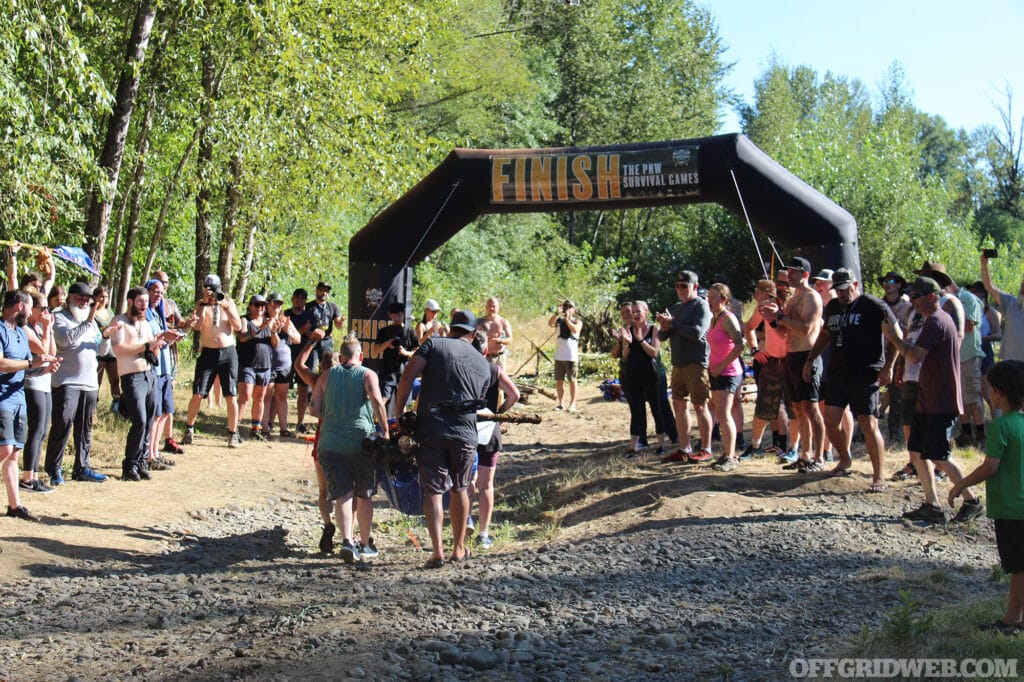
Above: Once the rafts were out of the water, the contestants had to carry them a short distance over the finish line. They were met with enthusiasm and encouragement along the way.
Winners of the PNW Survival Games received a generous prize cache for their efforts:
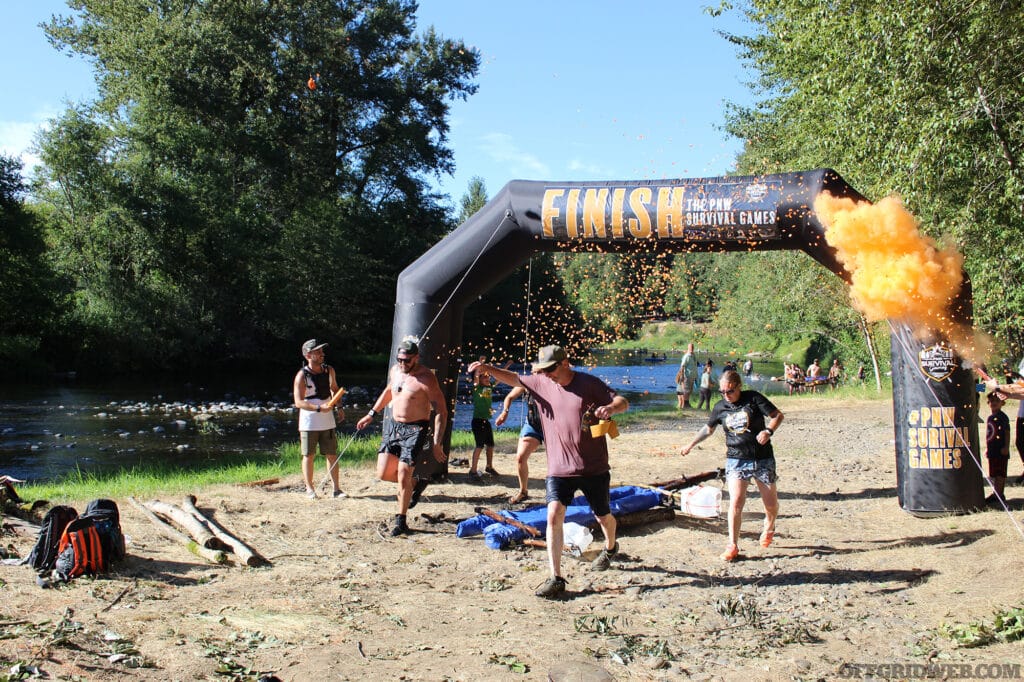
Above: The first team from the raft building challenge crosses the finish line, making them the first to complete the 2024 PNW Survival Games.
As the PNW Survival Games came to a close, it was clear that the event had left a lasting impression on all who participated. Contestants were eager to share their thoughts and experiences, reflecting on the challenges they had faced and the skills they had acquired.
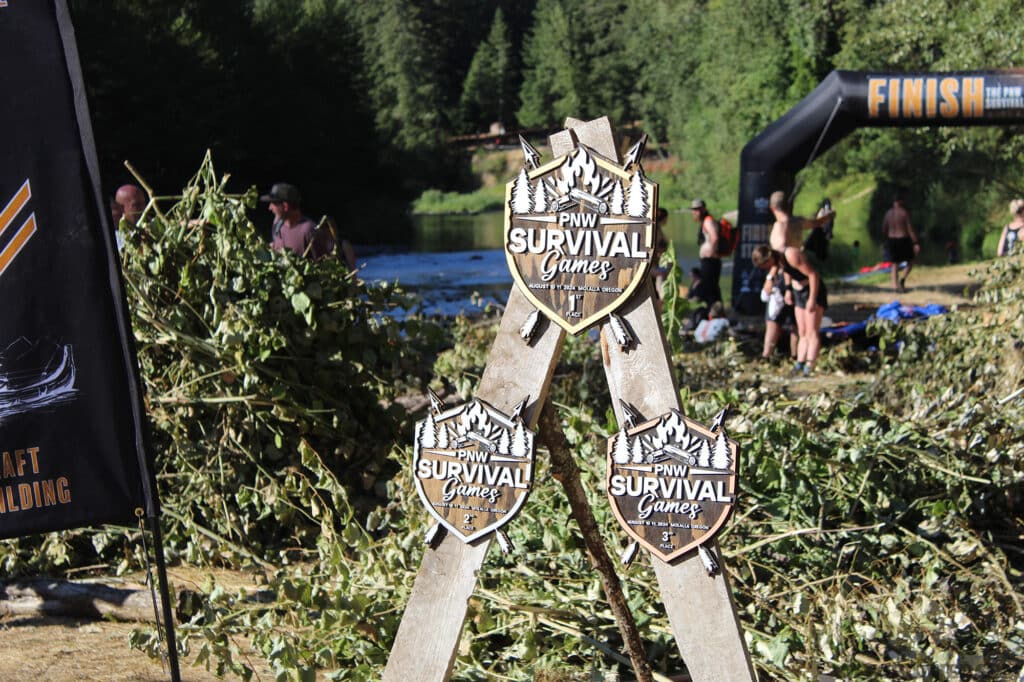
Above: Teams who placed in the top three were awarded custom made PNW Survival Game plaques.
One contestant remarked, “I never realized how much I didn't know.” Another noted, “I feel much more confident being self-reliant in the wild.” These sentiments were echoed by others who praised the practical, applicable skills they had learned, particularly during the medical portion of the event. “You don't realize how much time it takes to complete one of these skills,” a contestant observed, which speaks to the importance of practice, preparation, and patience necessary to master these skills.
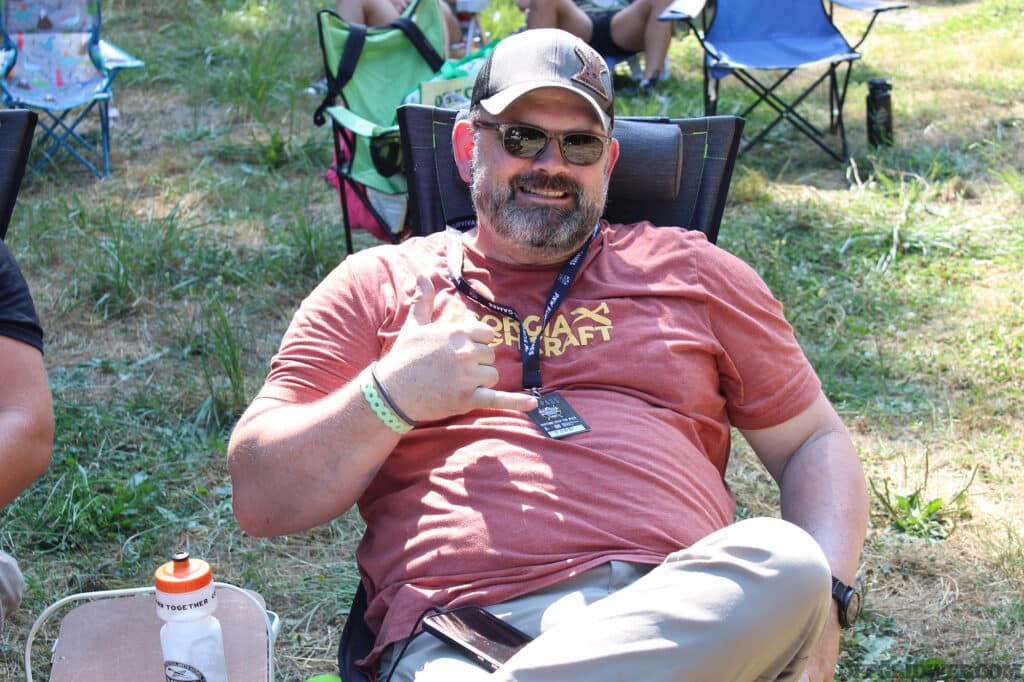
Above: Todd from PNWBushcraft watches the participants of the Games as they build their bows and arrows. Aside from presence of sponsors, contributors and a busy camera crew, spectators were also invited to attend to cheer on their contestants.
Many participants expressed their intention to return next year, with many planning on bringing friends. The sense of accomplishment and the confidence gained from the event were evident in their words. “I learned so much practical, applicable skills from the medical portion. I feel much more confident being able to help others or myself,” one participant said, which seemed to be the overall impact of the event among contestants.
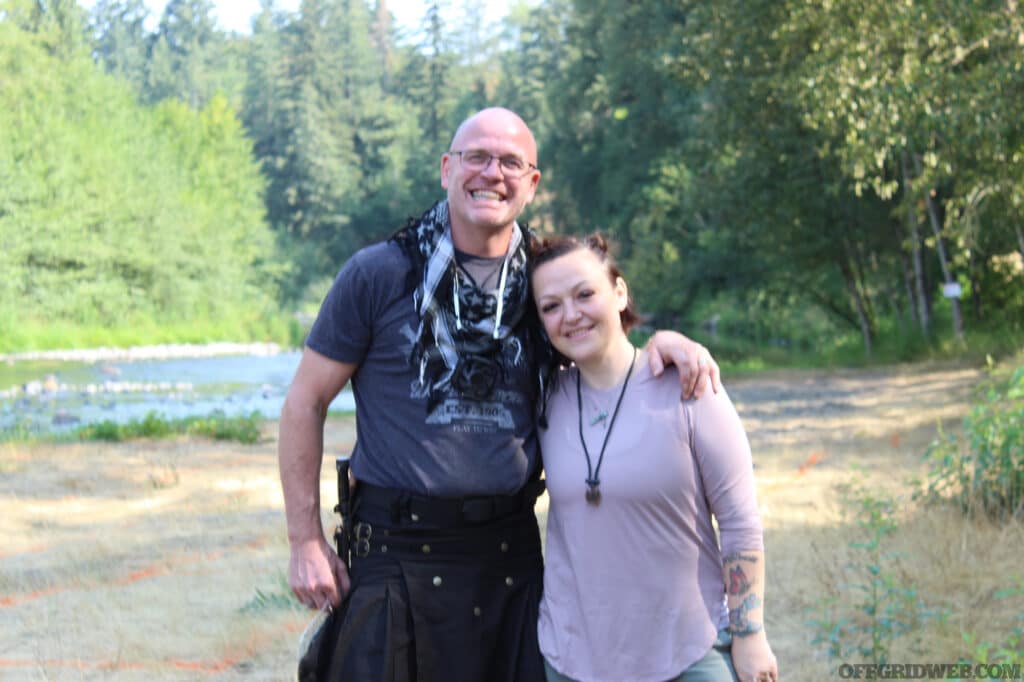
Above: Nothing builds the bonds of friendship quite like a shared obstacle to overcome. Everyone who attended left the 2024 PNW Survival Games with new friends and new stories to share around their next campfire.
Despite some minor setbacks—understandable for an event in only its second year—the PNW Survival Games proved to be an accessible and invaluable experience for anyone interested in survival skills. It offered a unique opportunity to learn and practice these skills in a supportive environment while also providing a platform for participants to meet TV personalities and potentially pursue their own path in the survival community. For those who participated, it was an unforgettable experience that left them better prepared to face the challenges of the wild—and eager to return for more.
This event would not have been the success it was without the hard work of LeeAnn Peniche holding down base camp, and all of the sponsors, vendors and contestants chipping in to help. We are also grateful for the timely response of the Molalla First Responder crew who came to help the contestant who suffered a heat injury.
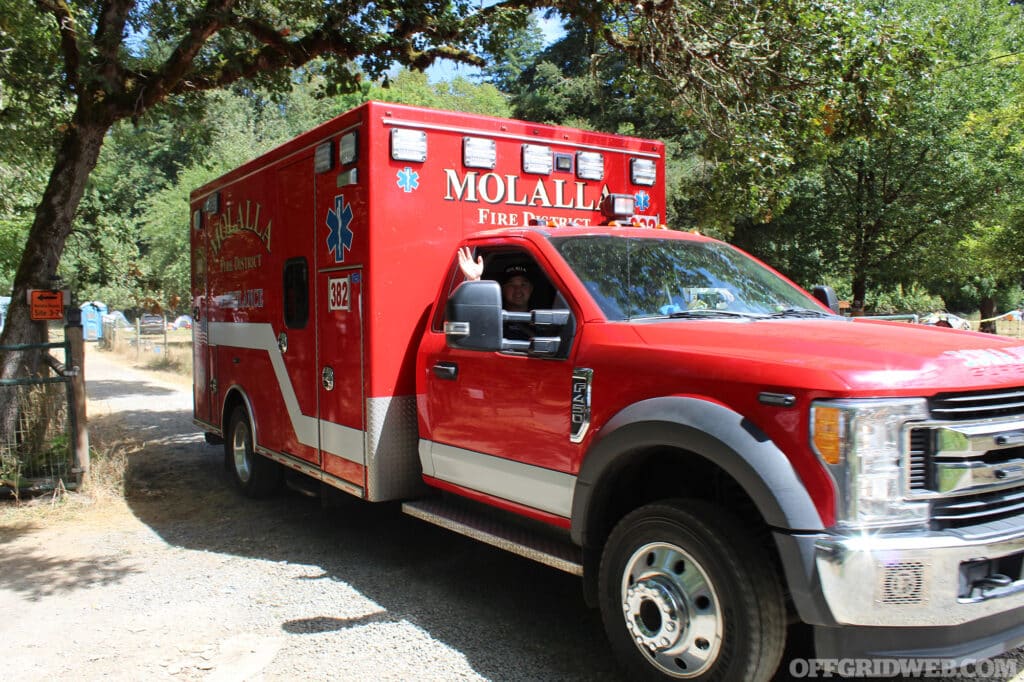
Above: Molalla First Responders arrived in short order to assist with a heat injury. Their presence added a layer of comfort knowing they were nearby and ready to help.
Subscribe to Recoil Offgrid's free newsletter for more content like this.
 STAY SAFE: Download a Free copy of the OFFGRID Outbreak Issue
STAY SAFE: Download a Free copy of the OFFGRID Outbreak Issue
No Comments